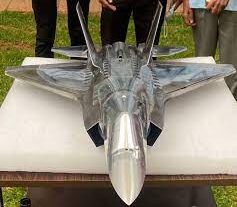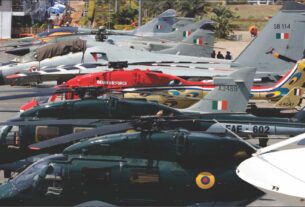Indian troops and difficult terrain warfare
By dint of constant deployment over decades in the Himalayas in some of the highest battlefields in the world, Indian troops have accumulated significant expertise in difficult terrain warfare. However, the threats to Indian territorial integrity are not confined to mountain warfare. They include the deserts of Rajasthan and Gujarat, the forested mountains of Jammu and Kashmir and the North-east, and the salt-water creeks along the Indo-Pak border and the Indo-Bangladesh border. Each requires clothing and equipment unique to their respective battlefields.
From the very moment of its creation India has been fighting wars in very difficult terrain. In 1948, Pakistan Army officers disguised as tribal led an invasion of the princely State of Jammu and Kashmir to try and force the accession to Pakistan of a ruler who was vacillating in his choice of options. Under the Pakistani threat the Maharaja opted to join the Union of India and the airlifting of Indian troops to the Srinagar airport helped push the raiders back but the announcement of a ceasefire left a large chunk of the State in Pakistani hands.
Since then it has been a thorn in Indian flesh and cause of four more wars with Pakistan in 1965, 1971, on the Siachen glacier in 1984 and in Kargil in 1999. In 1962 China also invaded India across the Himalayas and the difficulty of fighting in that terrain was brought home very starkly to India. It was a humiliating experience and India has since tried to learn the lessons from such experiences. It managed to abort Pakistan’s attempt to delink the whole of Jammu and Kashmir from India in 1965. It delinked the east wing of Pakistan in 1971 and helped create the independent sovereign nation named Bangladesh. In 1984 it stumbled upon Pakistani agents in UK buying high-altitude alpine equipment for an expedition into the Siachen glacier which was not hitherto delineated on maps. India preempted that attempt to present it with another fate accompli by deploying its own troops on the Saltoro range. In 1999 it was shocked by the discovery of Pakistani troops in occupation of a 10X60 km stretch of Indian territory across the Line of Control in the Kargil-Dras sector but managed to retrieve every inch after a two-month period of constant bombardment from the air and ground-based artillery followed by gutsy mountain warfare by the Indian Army infantry that saw several hundred Pakistani troops killed and captured.
Constant learning
Difficult terrain warfare is a constant learning experience. Over the years Indians have learned that presence is a major deterrent to misadventure by neighbors. To seize the high ground and hold it is a panacea against creeping aggression and “salami slicing” of Indian territory through clandestine military operations.
It was seen that the ratio of manpower required in the assault mode vis-à-vis an entrenched force in the higher reaches of the mountains is drastically higher than what is required in the plains. In the plains it is generally accepted that a ratio of three attackers to one defender can soon turn the tide of battle in the attacker’s favor. In the Himalayas the Chinese realized this factor and used “human wave tactics” to overwhelm Indian defences in the attacks through Arunachal Pradesh in the east. The dissolution of Indian defences allowed a Chinese passage as deep as Tezpur in Assam.
That the depth of this invasion was facilitated by the failure of crucial formations in the north-eastern sector to use the weapons in their possession on the specious plea (as admitted by Brigadier Dalvi in his book “The Himalayan Blunder” after his release from a Chinese prisoner-of-war camp) that it would have unleashed a more ferocious Chinese attack on a wider Himalayan frontage. Yet, it is a matter of record that where Indian troops stood and fought to the last- man-last-bullet they managed to stem the Chinese assaults in the Aksai Chin sector in the west.
India has time and again been taught the lesson that presence is a better deterrent than post ipso facto invasion repulsion. This is as true for the higher reaches of the Himalayas as it is along the riverine and thickly forested segments of both Jammu and Kashmir and the north-east where counter-insurgency operations have a high manpower orientation of as much as 25 security personnel to one terrorist.
High altitude warfare underscores that the disability of travelling through craggy mountains has to be overcome by the use of vertical lift platforms. Among the lessons learned by India is that one has to be aware and able to tackle the possibility of shoulder-fired surface-to-air missiles. During the Kargil invasion India lost one aircraft and one helicopter for not learning from the Afghanistan experience of the Russians who lost dozens of helicopters before they developed counter-measures like flying out of reach of these missiles and delivering a bombload on ground targets.
Also relearned was the lesson in gunnery that highlighted major deviations in trajectories of bullets and shells after leaving the barrels in the cold, rarified atmosphere. The deviations were such that entrenched Pakistan Army intruders remained comfortable in spite of constant bombardment because the projectiles tended to stray widely from the known range tables available with the Artillery Regiment. Fortunately it dawned on the gunners that using high-trajectory weapons in direct fire mode was more effective because the time-in-flight was not as long as it is in a high parabolic curve during which the climate takes its toll on the ballistics of a flying body. Thus the much-maligned Bofors 155 mm howitzer came into its own and re-established its credibility as a weapon of choice in the Himalayas.
Ensuring backup
Also, it brought to the forefront the devastating capability for destruction intrinsic in the 12 barreled Pinaka 214 mm rocket launcher which saturated the crevasses and the stone sanghars (shelters) constructed by the Pakistan Army Northern Light Infantry (posing as mujahideen in salwar-kameez) by being able to create a stand-off zone that was as close as seven km from the enemy or as far away as 42 kms. Between these distances the Pinaka rockets wreaked havoc even when they missed a direct hit because of the splinter effect of their 100 kg warheads. There are limitations to where the Bofors howitzer or the Pinaka MBRLS can be taken in the Himalayan heights and hence the Army has been seeking a lighter 155mm howitzer that can be lifted by a helicopter on an underslung load.
It is time that the DRDO and the Army develop doctrines for the use of stripped-down six-barrel variants of the Pinaka that can be lifted by helicopters and placed in pre-prepared firing positions for operations on the Siachen glacier which ranges in height from 17,000 ft to 20,000 ft. With a range of 60 km of the Pinaka 2 variant it can provide good artillery backup to Indian troops at the forward edge of battle in parts of the Jammu and Kashmir sector where the Chinese have been making deep intrusions such as the Chumar sector. It would mean both the desirable holding of the high ground as well as dominating the landscape over a 180 degree segment.
This highlights the intrinsic corollary of what kind of body armor an Indian soldier would need to be able to fight in such a terrain. The Kargil experience has shown that having to fight one’s way upwards towards an entrenched enemy makes the soldier prone to being shot in the head and shoulders for which no real protection can be provided given that the kinetic effect (hit capability) of any kind of bullet cannot be resisted effectively by a person hanging on the cliff side by his fingernails. Many Indian casualties in the Kargil war had head wounds and that is why the emphasis is growing that India cannot afford to allow the enemy to gain the high ground. The round steel ‘patka” is useless even if it does not allow penetration because a bullet hit of any caliber can break the neck causing paralysis.
Body armor has to be light, its fabric breathable. Experience has also shown that in the exertion of warfare human sweat has to be dispersed quickly lest it freezes on the body causing problems of frostbite and cold sores. Nonetheless, as in the plains and jungle warfare there is need to cushion and harden the elbows, the shoulders and the knees of all kinds of apparel used in these areas. In the case of bullet proof jackets attempts are being made to improve ballistic properties by finding new materials and weaving patterns to construct higher levels of protected as laid down in the benchmarks of the American National Institute of Justice (NIJ). Lightness is being achieved by tweaking the materials and production techniques whereby it is now possible to get a body armor of a weight of 3.5 km with all-round torso protection. This has been achieved by inserting bullet proof materials into pockets under the armpits and as pads on the shoulders.
Difficult terrain warfare and effective body armor will, however, continue to depend on the age old dictum of warfare: “Seize and retain the high ground”.




